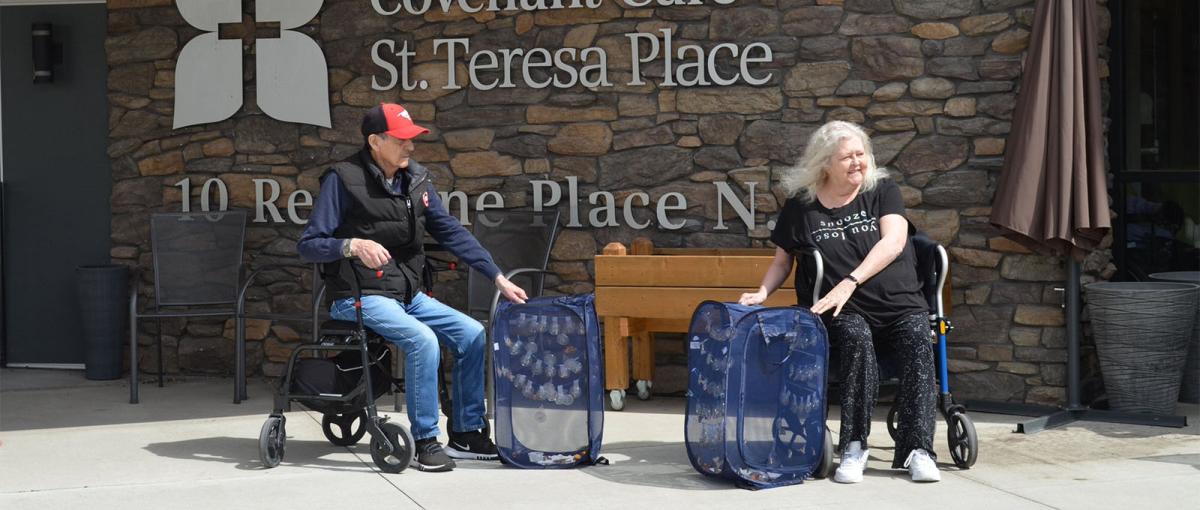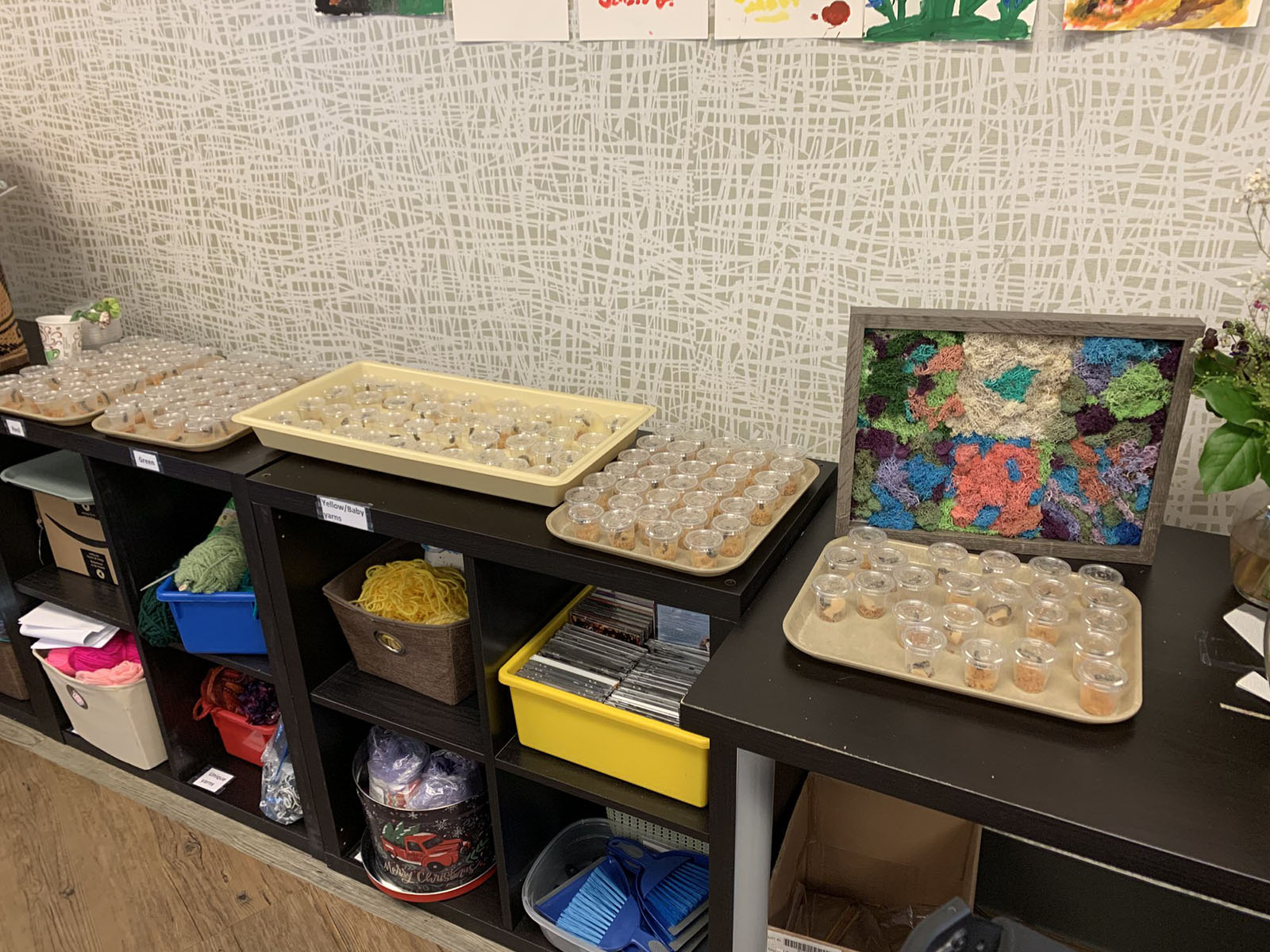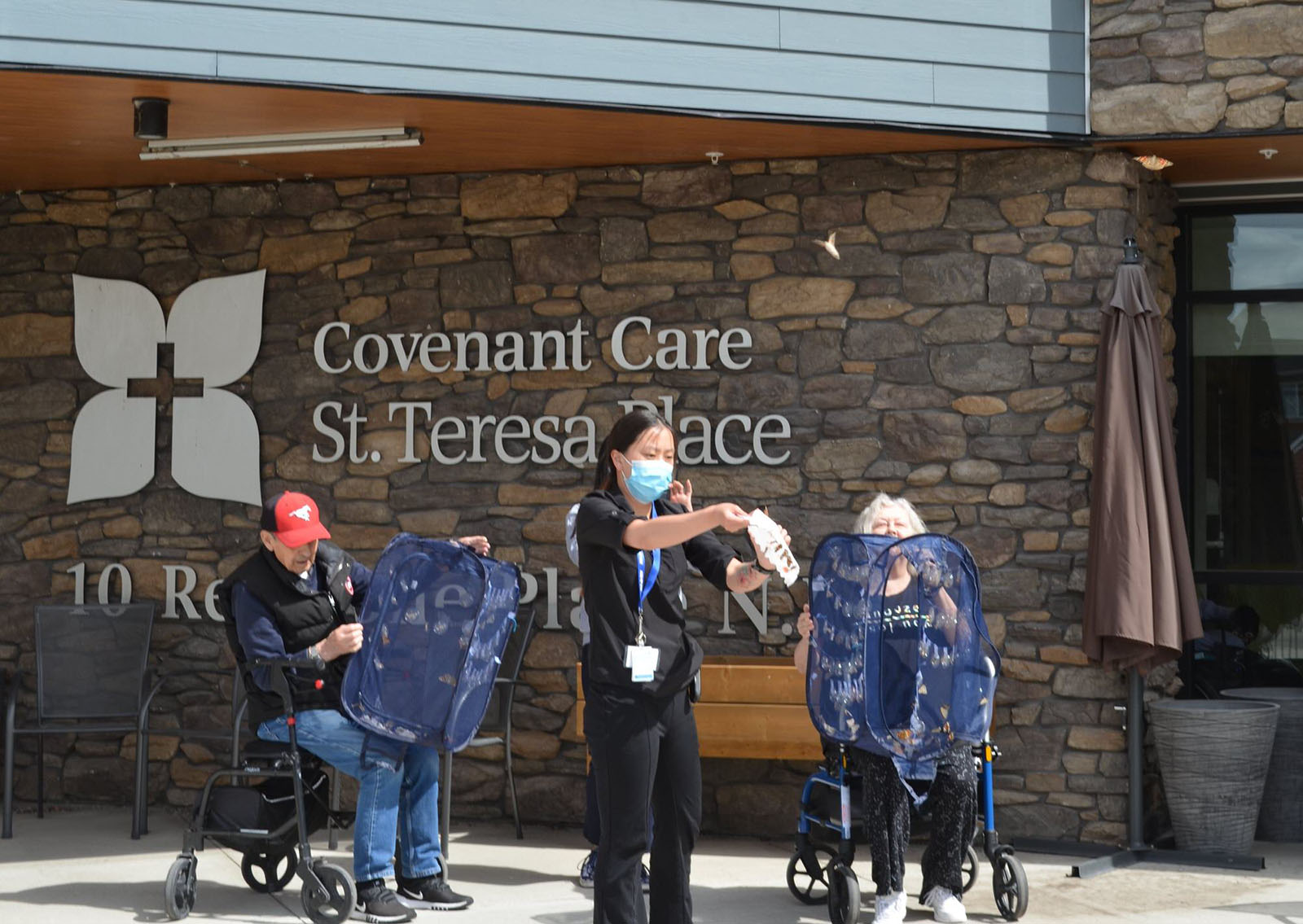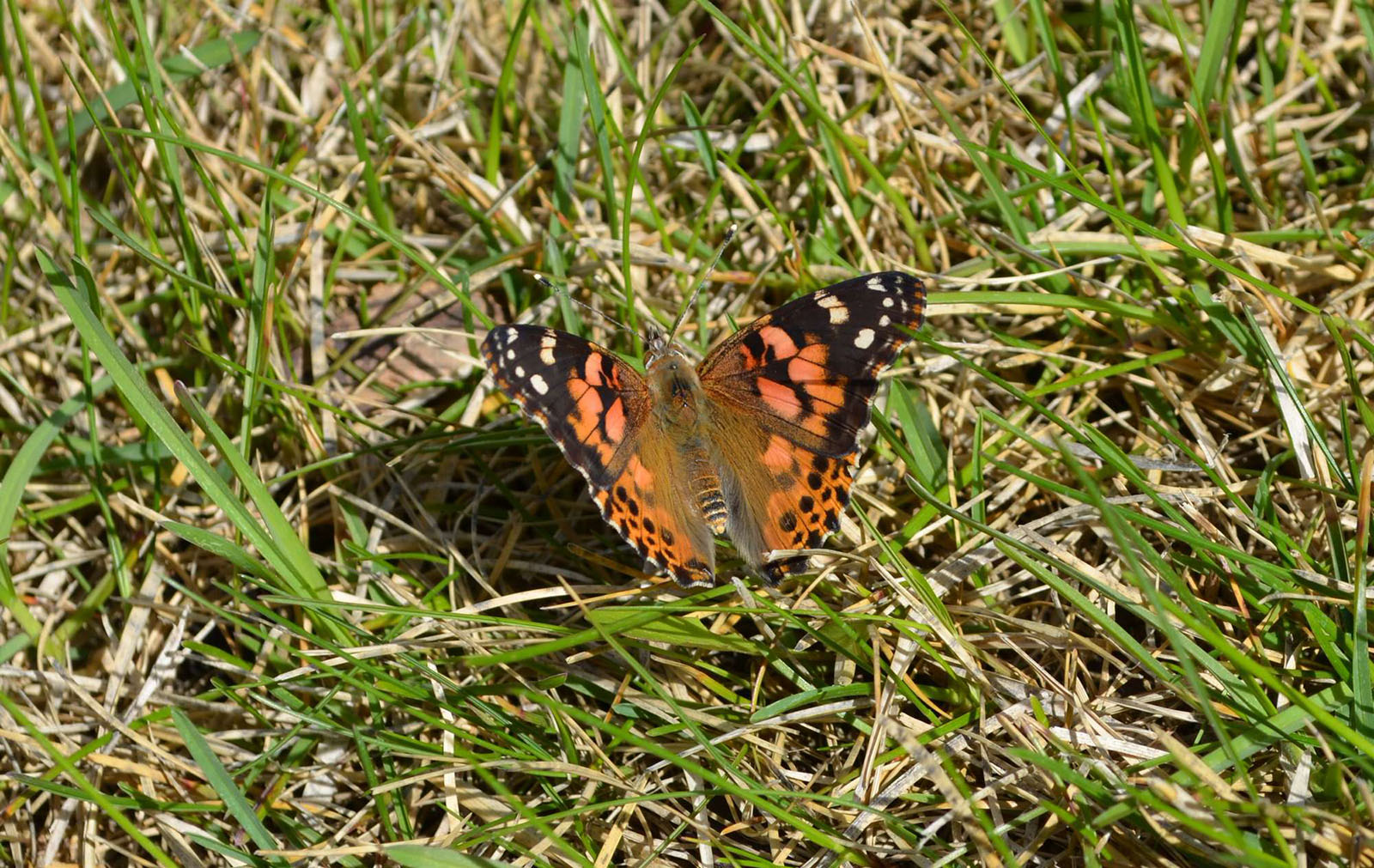New butterfly therapy project takes flight
A new form of therapy using butterflies has been introduced to residents of St. Teresa Place

September 15, 2022
By Peter Rybar, Social Media and Storytelling Advisor, Covenant Health
Mary Jo Beveridge, 78, a resident of St. Teresa Place in Calgary, was overcome with powerful emotions as she watched dozens of majestic butterflies be released from their enclosures.
“It just felt like new life,” she says. “I was filled with hope for those butterflies, that they would find their way. We were so happy to see them go and be a beautiful part of nature.”
The butterflies were part of a captivating new program nicknamed the “butterfly therapy project,” which came to life at the Covenant Care facility this summer. The facility’s recreation therapy team brought in live caterpillars housed in containers, giving residents the opportunity to observe their development and transformation into magnificent butterflies. The residents and staff then ceremoniously released the butterflies into the wild.
The idea for the project arose when members of the facility’s recreation therapy staff attended a professional education session on garden therapy. This led the team to brainstorm about similar forms of therapy that could be implemented with St. Teresa Place residents. The team ultimately landed on pet therapy and decided that caterpillars would be a great way to introduce it to the residents.

Caterpillars growing in their containers
Although experimental, the initiative turned out to be a big hit, says Stephanie Rodgers, recreation therapist.
“We noticed the residents responded really well. We had residents who would stop and visit with the caterpillars and check on them regularly. Being able to release them was a really cool experience.”
It was clear from the research that the program had big potential, says Robin Ostrander, recreation therapist. “Studies show that the therapeutic aspect of caring for something can have amazing benefits.”
However, the team wasn’t exactly sure if caterpillars would have quite the same impact as some of the more cuddly varieties of animals often used in pet therapy. They were pleased to see that even a tiny organism like a caterpillar could elicit a powerful emotional response, Robin says.
“Even though they were just little caterpillars, we would see residents speaking words of encouragement to them when they passed by, such as ‘you’re going to be so beautiful one day’ and ‘you’ve got such a great future ahead of you,’” says Robin.
The butterfly therapy project also provided some social benefits to residents. “We would see residents coming together to discuss the program and encouraging others to get involved,” says Robin. The conversation often then turned to other aspects of their lives, making the program an icebreaker that helped residents communicate more freely and build stronger social connections.
Robin and Stephanie report that many of the residents also appreciated the educational aspect of the program. They claimed to have never learned about the metamorphosis process that transforms a caterpillar into a butterfly during their school years. And they were delighted to witness one of nature’s miracles up close and personal.
“Seeing the different stages was magical,” says Mary Jo.

Residents and staff of St. Teresa Place release butterflies into the wild.
Though unintended, an additional benefit of the program was that it allowed some residents to confront their entomophobia, the fear of insects. “One resident said that she found it to be a great way to face her fears, almost like exposure therapy,” says Stephanie. “She realized that caterpillars were not as scary as she once thought, and then to see them as butterflies, she found that they were actually really beautiful.”
Mary Jo can relate to this experience. While she isn’t a big fan of insects, she grew to appreciate the little caterpillars as they developed.
“When I was young, my brothers were awful,” she says. “Along with the neighbour boy, they would put earthworms down my back! So I was very squeamish about seeing worms and other bugs. But once we got going with the project, I was totally fine with the little caterpillars.”
The facility’s chaplain, Greg Kern, was even able to incorporate butterfly-themed messaging into a homily delivered to residents and staff. He spoke about what butterflies can represent for people, including themes of renewal, rebirth and change.

A Monarch butterfly gathers its bearings after being released.
While staff expected residents to be engaged with the transformation, the level of enthusiasm was a pleasant surprise. “I didn’t really expect the residents to be as excited about it as they were,” says Stephanie. “It was amazing to see them telling their friends and family all about it.”
Mary Jo and other residents are already looking forward to the return of the project next spring. “It was a very enjoyable experience,” she says. “I would certainly love to do it again. I think next time we would have even more people taking part in it.”